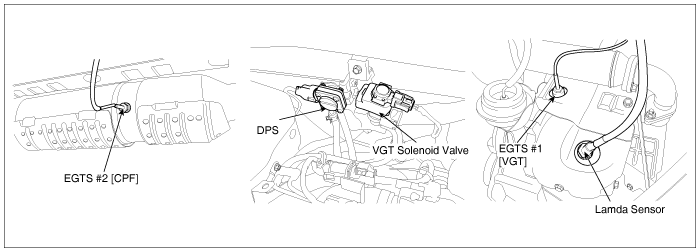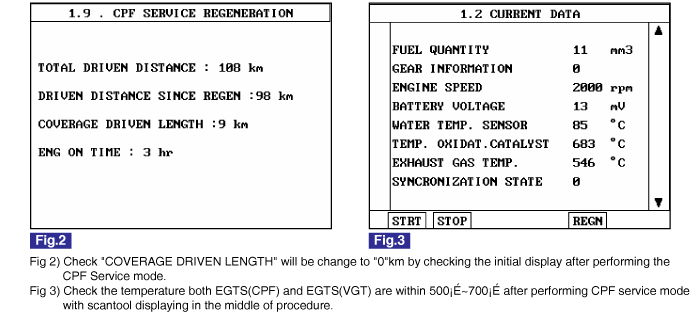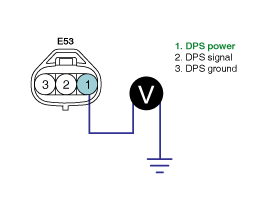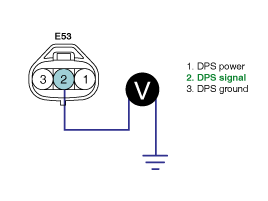Data analysis about CPF
Connect Scantool to Data Link Connector (DLC).
Warm engine up to normal operating temperature.
Turn "OFF" electrical devices and A/C.
Monitor "DIFFERENTIAL PRESSURE" and "PRESSURE PRE CPF" parameter on the scantool.
specification : "DIFFERENTIAL PRESSURE" and "PRESSURE PRE CPF" data must not be too high or low.
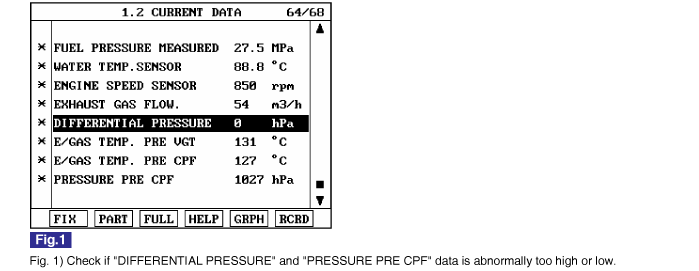
The "Scantool Data" shown above is measured at the vehicle with new CPF component. Therfore, data varies depending on CPF used duration and total driven distance.
☞ When "DIFFERENTIAL PRESSURE" is too high : Check if excessive soot is accumulated inside of CPF before inspecting DPS related problem. If needed, perform "CPF SERVICE REGENERATION" to burn the soot inside of CPF and monitor data change.
☞ When "DIFFERENTIAL PRESSURE" is too low : "DIFFERENTIAL PRESSURE" and "PRESSURE PRE CPF" data rises depending on engine load increase and the amount of soot inside of CPF. If differential pressure is not generated or soot is emitted without the rise of "PRESSURE PRE CPF" during excceleration, check CPF component failure.
☞ When "DIFFERENTIAL PRESSURE" doesn't change : If the not only Black smoke is not exhausted but the pressure difference also is not measred between at the front and rear of CPF, check disconnection, clog or leakage of DPS pressure hose.
